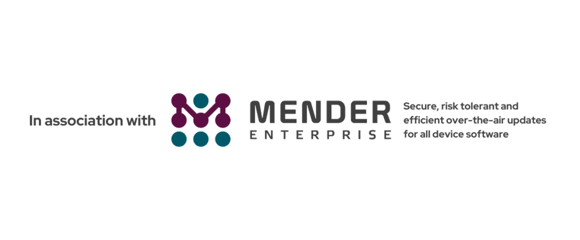The Device Chronicle interviews Jonathan Wilkinson, an IoT project leader who passionately believes in delivering the best onboarding experience to the user setting up ECUs or other IoT devices for the first time.
Jonathan is an IoT and Digital Specialist with extensive expertise in topics such as ECUs and telematics, Energy Management, Smart Home, BeMS, Smart Grid, EV Charging and Big Data Analytics.
We spoke to Jonathan about two of his most recent projects: one an industrial IoT project with ECUs in lorries, and the other a consumer project with home boilers which brings us to the main thrust of this article.
Jonathan has observed that in the development of IoT products with an example of ECUs in lorries, product managers and engineers are so concentrated on the product after it’s connected to the Internet, that they forget that you actually have to get it on to the Wi-Fi network or cellular connection to begin with. A good IoT product has product managers and engineers who have thought this through meticulously. They have tested it with a variety of different end users in many different scenarios.
Onboarding mostly happens only once but if it works well then it will reduce significant volumes of calls to the help desk and increase customer satisfaction. IoT product makers need to think beyond designing and engineering a product that works well once it’s onboarded and activated, and actually think hard about how to ensure that the the many different types of users out there with differing degrees of tech savvy are able to easily connect the IoT product to the Internet in the first place.
Catering for IoT devices
Device onboarding, according to Jonathan, is often overlooked. He starts with the example of Ideal Heating where they are connected thermostats on its boiler products. As a consumer device, an Ideal boiler with a connected thermostat has lots of different users with different technology levels and they all need to interact with an IoT device. This brings a tremendous focus on usability. The device must be designed so that everyone can understand it, from how they operate the device to the basics of getting it connected to the Internet in the first place. This product has to deal with the reality that most users have little patience and want the device to work immediately. There are additional complicating permutations such as different types of Internet connections, different browsers in use. User struggling to cope with access and product activation credentials. There are just so many things that can go wrong.
Key stages in IoT usability with IoT devices including ECUs
Jonathan describes two key stages in the IoT product usability challenge. One is the onboarding of the device and getting it connected to the Internet. Product managers must ensure that there is a slick sign on process into the device. People hate the complexities of a password and this can create frustration before people actually start to use the product. This is where extensive user testing helps to synthesise the best possible experience.
Screen simplifies matters
Jonathan continues to say that if the application interface on the IoT product does have a screen then it becomes easier. iIf the product doesn’t have a screen then there may be a need for pairing mode to connect to the user’s Wi-Fi network. This makes it more challenging for many users. “Maybe they have pressed a button and then the LED flashes. These buttons can be confusing and their meaning can be lost in translation depending on who is engaging with them. The developer will say the 1Hz flashing LED will mean this and the 5Hz flashing LED will mean this. But in the product user manual it will often ask the question to the end user: Is the LED flashing quickly or slowly? The end user may not know which state the LED is in. The trick for Jonathan is to engineer every on-boarding step to be simple. You will find this with a Sonos manual. Also with the Nanit IoT baby monitor product, there is a very smooth on-boarding process through the manual. The use of Bluetooth to help pair the connection with Wi-Fi can also help and make general onboarding that bit easier. Connecting through an access point on the IoT device can be more challenging for consumers, especially with many mobile phone OS versions outside of iOS versions 13 and 14.
Onboarding in the dark with ECUs
We move to the next conundrum in the IoT product onboarding: How do you onboard IoT products without buttons or LEDs? There are good examples from the consumer world of how this is done well. Sonoff is a wireless light switch and it uses a QR code to execute an outbound Bluetooth authentication. The user simply uses their phone camera to scan the QR code and that gives its credentials to connect over Bluetooth and the device gets onboarded over their Wifi network. In industrial IoT, there are many projects where IoT devices without screens or LEDs are deployed. Jonathan makes reference to a recent project where there is an ECU device fitted to a lorry. There is no LED and no button to avoid water damage, no bluetooth so Wifi connectivity problems. how do you onboard the device so it emerges in the industrial sector. A QR code as a proof of purchase (POP) code and the credentials in the cloud. Once the user authenticates and proves that they are in front of the product by scanning the QR code, it can be printed on the manual so they can get access to the product and commission it.
Cellular power over the device life with ECUs
Jonathan focuses on the use of LTE M cellular communication while he was Head of IoT at Ideal Heating. LTE M provides ample connectivity and bandwidth for IoT and it is a cost saver over the lifetime of the devices. A sim card is simply inserted into the device, so that as soon as the product is powered up and it gets signal strength the device will connect and be operational to receive and transmit data. LTE M works at a frequency of 800Mhz over 4G-based networks so it’s very suitable for IoT devices fitted inside buildings and even hard to reach locations such as cellars. Jonathan goes on to assess the coverage LTE M offers. In the US, LTE M is quite well established. In the UK, O2 offers LTE M and Vodafone over narrowband IoT, so half the country has one technology and the other half with another. Jonathan continues “There are companies selling sim cards that will offer IoT connectivity for 10 years and will transmit 3 to 4 mbytes per month and update the device every 15 minutes.” Jonathan says that these sim cards are typically used in robotic lawn mowers for GPS positioning connectivity. It’s integrated with the connectivity as part of the service charge. This is vital as in gardens there may not be weak or non-existent Wi-Fi connectivity.
Proactive maintenance with ECUs
In a recent project Jonathan worked on, heavy goods vehicles were fitted with an IoT device that monitors tire health in fleets and detects if a tire is having problems. This could be low tire pressure or high temperature. This detection use case supports proactive maintenance. Jonathan elaborates “If you have a lorry or a goods vehicle and it’s out on the road. If it gets a problem with its tires and you have to get someone out to repair it, this would be time down and money lost. So if IoT can be used to automate and simplify tire management, this could save the organisation allot of time and money.
OTA software updates and the ECUs
The ECU device that is fitted to the truck is an embedded Linux device. It uses Yocto as its operating system and Mender provides the U Boot support and the over-the-air software updates to the devices. The ECUs that goes on the truck can work hand in hand with a second telematics device based on LTE M. The use of Mender for robust and secure OTA software updates with the ECUs enabled the project team to get a build quick to market. Jonathan says “the software updates were working within a week. It’s an OTA solution that has great support for Yocto builds and great product experts to help and advise.” Mender was selected over 4 other options. Another key thing about Mender for Jonathan is the delta updates the solution provides. This means that only the required fraction of the update will be executed each time saving on bandwidth. This is important when you consider that an updated image can be 200 to 300 mbytes in size each time and if a full update had to be done each time, this would be slow over cellular and cost a fortune.
OTA software updates are crucial
Jonathan believes in the importance of the onboarding experience for IoT project success but he is also adamant that over the air software updates are critical. He says that once a robust and reliable OTA software updates system is in place then operations are seamless. User will not know that it’s happening. Bug fixes, security updates and feature releases will be executed seamlessly to the devices. He adds that as long as you have OTA software updates that are secure and fail safe, almost everything else can be fixed. OTA has the potential to save a situation when it comes to a detected security issue.
Remember to penetration test, test, test
Jonathan concludes with some IoT cybersecurity advice. “A 3rd party penetration tester must be involved in security testing of IoT devices before they are commissioned. The security risks to IoT devices can include access elevation where an actor signs in as a basic user, and then elevates their access to an administrator, before going into a device in the fleet. DOS attacks can also be easy for a hacker, especially if the IoT device has limited resources. There is considerably more risk with consumer products than with industrial products as there are more attack vector possibilities from hobbyists once you put an application in a store for download. The challenge too with IoT devices is that often basic security principles are not adhered to by manufacturers. Jonathan insists on making security by design an integral part of the product development strategy. Of course manufacturers must have it as a responsibility to ensure the security of their products. The new legislation passed into law recently in Washington will help with this.
Visit iBee.uk for more information on Jonathan and the services he offers.
Here’s another fascinating interview with an IoT leader in maritime.

